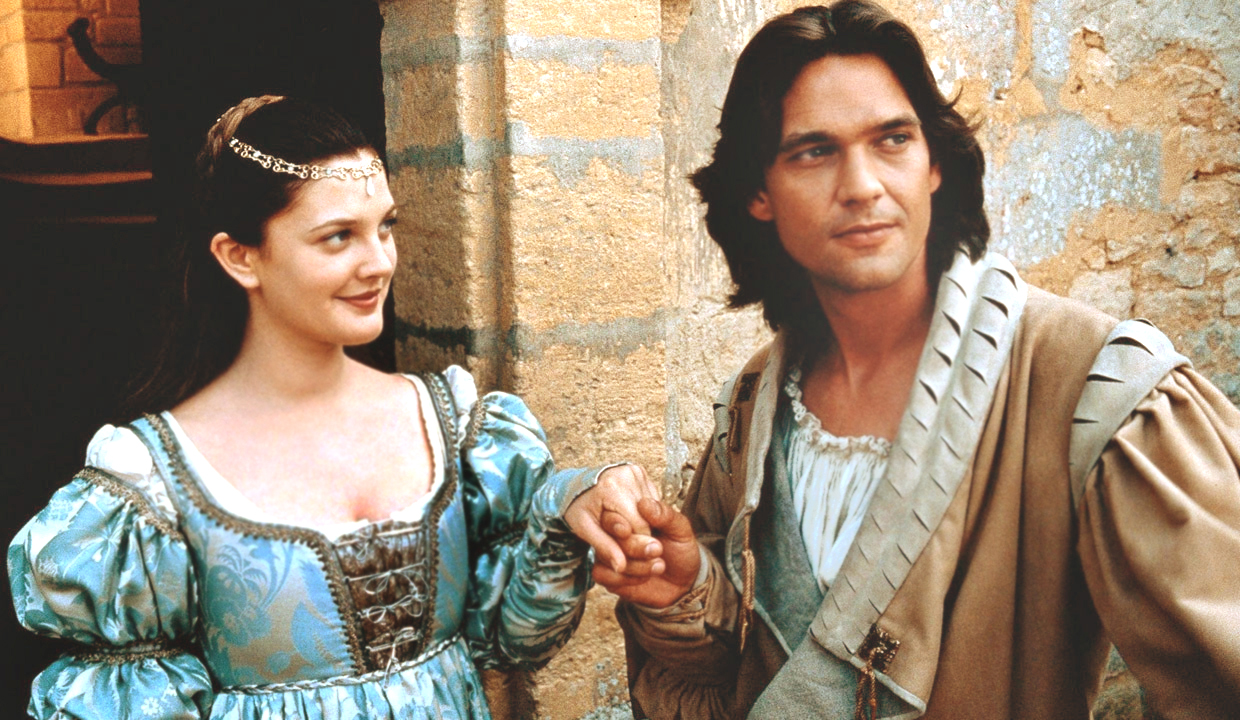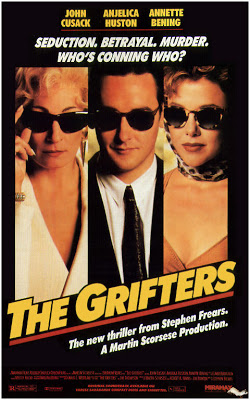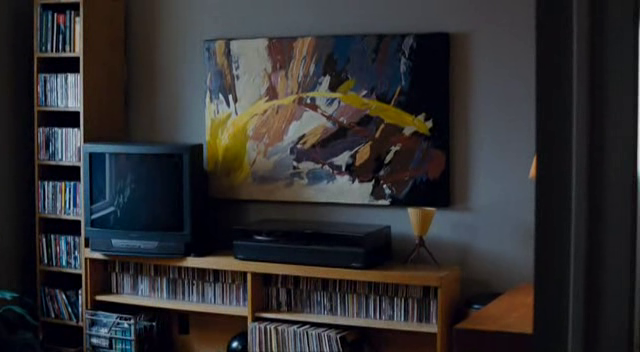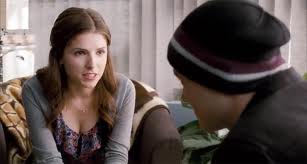This guest post by Emma Kat Richardson appears as part of our theme week on Bad Mothers.
Let’s face it: Ever After is pure fluff. Sure, as a late ‘90s girlhood staple, it’s been deified by 20- and 30-somethings old enough to remember when Drew Barrymore was touring with Hole and flashing David Letterman. And yes, there is some feminist gravitas about the film that makes it stand out; a streak of personal empowerment runs through this hip retelling of the classic, demur Cinderella tale. It was the perfect interpretation of a decidedly not-feminist fairy tale for the Girl Power! generation.
Revisiting Ever After now is a bit like biting into a Hot Pocket after 10 or more years of not having done so; it’s a bit more plastic than you last remembered. The shiny Hollywood gloss that decorates Ever After from head to toe becomes more transparent with age. To its credit, the film does a relatively competent job of co-opting the look and feel of a real Renaissance setting, but this doesn’t prevent the acting from being frequently overwrought, the plot devices predictable and contrived, and the fact that everybody speaks with a British accent, despite living in France. (No Francophile worth her weight in, well, Francs, would stand for it!)
That said, there is one compelling element to this fairy tale that makes it well worth a closer look: the utterly fascinating dynamic between Cinderella and her “wicked” stepmother.
As an orphan of common origins, Drew Barrymore’s spunky protagonist, Danielle de Barbarac, is forced into a life of servitude to her father’s widow, the Baroness Rodmilla de Ghent, and the Baroness’s two natural daughters, Jacqueline and Marguerite. As Baroness Rodmilla, Anjelica Huston is equal parts breathtaking as she is fearsome, as cruel as she is oddly sympathetic. Disney never could have dreamed up such a multi-layered villainess. Together, the two lock horns in a continuous battle for control over personal fortune and fate. It’s far from a healthy relationship, and Rodmilla is far from a nurturing force. Even toward her own daughters, she’s spiteful and manipulative; throughout the film, she continuously taunts Jacqueline about her weight, and spends a considerable amount of time trying to push Marguerite into bed with the prince. (Not that Marguerite is exactly unwilling; she’s certainly inherited more of the toxic elements of Rodmilla’s personality.)
And then, there are hints at Rodmilla’s background that suggest more substance than one-dimensional wickedness. For one thing, she’s a noble woman who appears to have married Danielle’s father, a man far below her station, out of love. The de Barbaracs are not nobility; before she met Prince Henry, Danielle had never been to court. Her father, Auguste, is a country gentlemen of modest means and one small manor farm for property. On the other hand, the baroness brings with her a title and riches. Presumably she is a dowager baroness, since she has two daughters but no baron to keep her swathed in rich furs. We see more evidence of their love when Danielle tends to Rodmilla in her most intimate moments – brushing her hair before bed, sharing heartache over the memory of Danielle’s father, who died of a heart attack when she was just 8. “Did you love my father?” Danielle inquires earnestly. “Well, I barely knew him,” is the restrained reply. “No go away, I’m tired.” Visibly moved, Rodmilla stifles a tear and looks off into the distance, sobered.

While she may have loved her father, she merely tolerated Danielle, which is the most generous possible way of putting it. With his dying breath, Auguste reaches for his scrawny, weeping daughter–not his glamorous new wife, also howling with grief. It is an unintended slight for which Rodmilla never forgives Danielle, and the severity of Danielle’s punishment for this offense is boundless. Yet, Danielle can’t help but try at every turn to please her ceaselessly demanding stepmother. In lieu of any other parental figure, Danielle may have latched on to Rodmilla as the only viable role model in her young, fragile life. It’s possible she even learned how to cultivate self-reliance and independence from the formidable baroness; after all, Rodmilla spends the majority of the movie husbandless, scheming, and maneuvering her way into higher chances and better opportunities. In many ways, Rodmilla and Danielle are more alike than they are drastically different, as every other Cinderella narrative would have you believe. Both are rather unusual women for their era: Danielle is the daughter of a low-born farmer, but she can read and write, and even quote Thomas More from memory. Rodmilla, a woman born to privilege, actively chooses to be single and to make her own way in the world – even if this occasionally involves playing by the rules of the patriarchy, which govern both their lives.

But ultimately, of course, we all know how this story concludes. Danielle triumphs over her tormentor, capturing the heart of the prince and rising to a status so high it would have made even the grasping Rodmilla dizzy. Given that, however indirectly, she taught Danielle to follow her heart and live out her ambitions for a better life, can we really write her off as a bad – or, indeed, wicked – mother? Rodmilla is deeply flawed, and far from perfect. She’s narcissistic and hypocritical: “We must never feel sorry for ourselves,” says the woman who spends much of the movie moping about how under-appreciated she is. And yet, the pivotal role she plays in the development of Danielle’s self-actualization cannot be denied. Even more so than in her relationship with Prince Henry, Danielle is indelibly shaped by her stepmother’s influence. Driven to succeed on each of her own terms, these two remarkable women together fill the void left by far too many conventionally competitive mother-daughter dynamics. In the end, karma doles out adequate payback, with Rodmilla and Marguerite being sent to work in the royal laundries, as Danielle becomes queen-to-be through her marriage to Henry. “I only ask that you show her the same kindness she has always shown me,” Danielle says to the king and queen, while debating Rodmilla’s punishment for lying to the queen about Danielle’s identity. Even as Rodmilla acquiesces to her fate, there’s a glimmer of respect in her eye for her long beleaguered stepdaughter. Perhaps she has taught her ward well after all.
Emma Kat Richardson is a Detroit native and freelance writer living in Austin, Texas. Her work has appeared in xoJane.com, Bitch, Alternative Press, LaughSpin.com, Real Detroit Weekly, 944, and Bust.com. She’s enough of a comedy nerd and cat lady to have named her Maine Coon Michael Ian Cat. Follow her on twitter: @emmakat.














